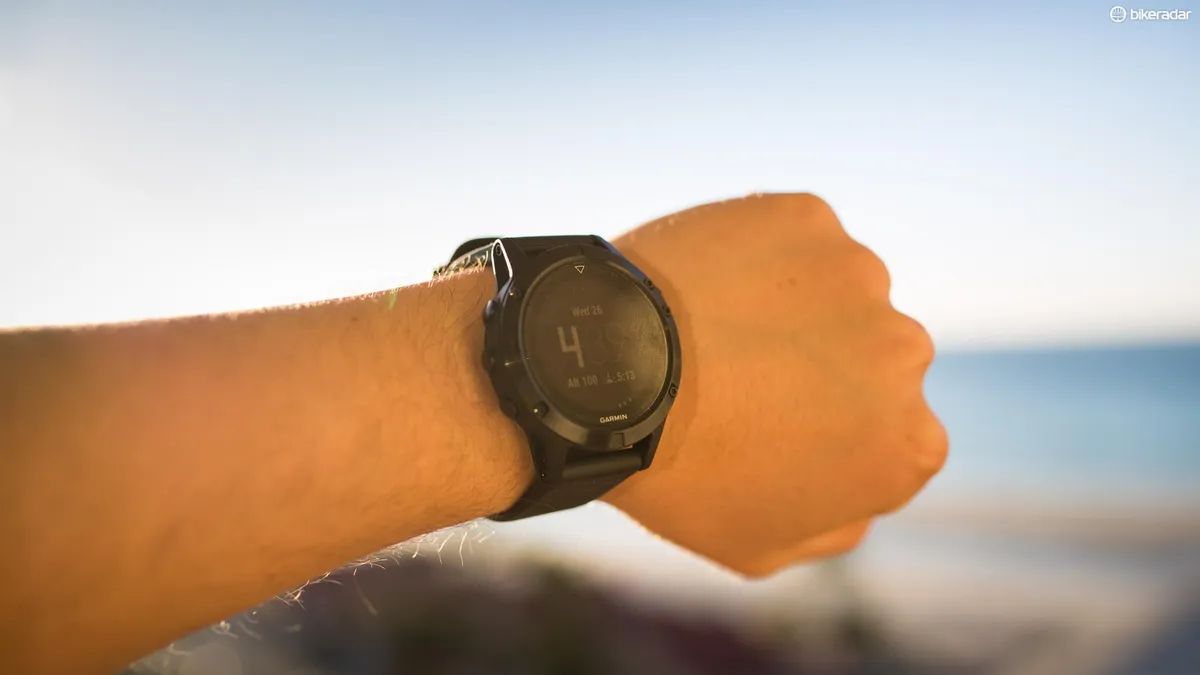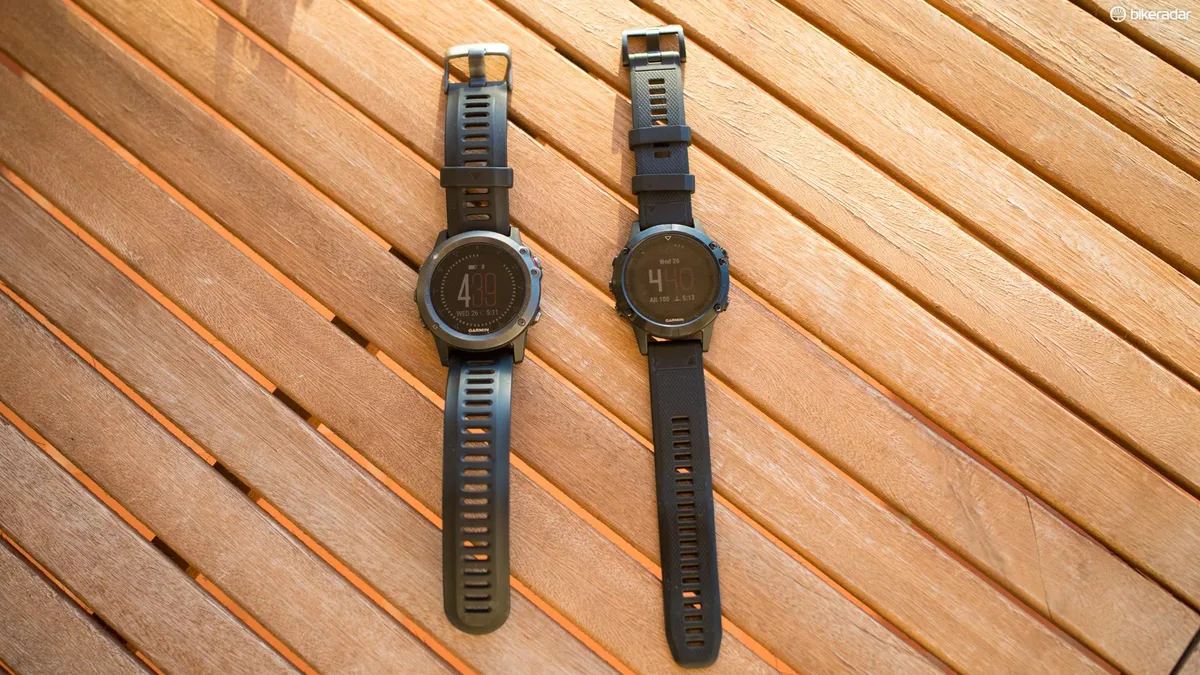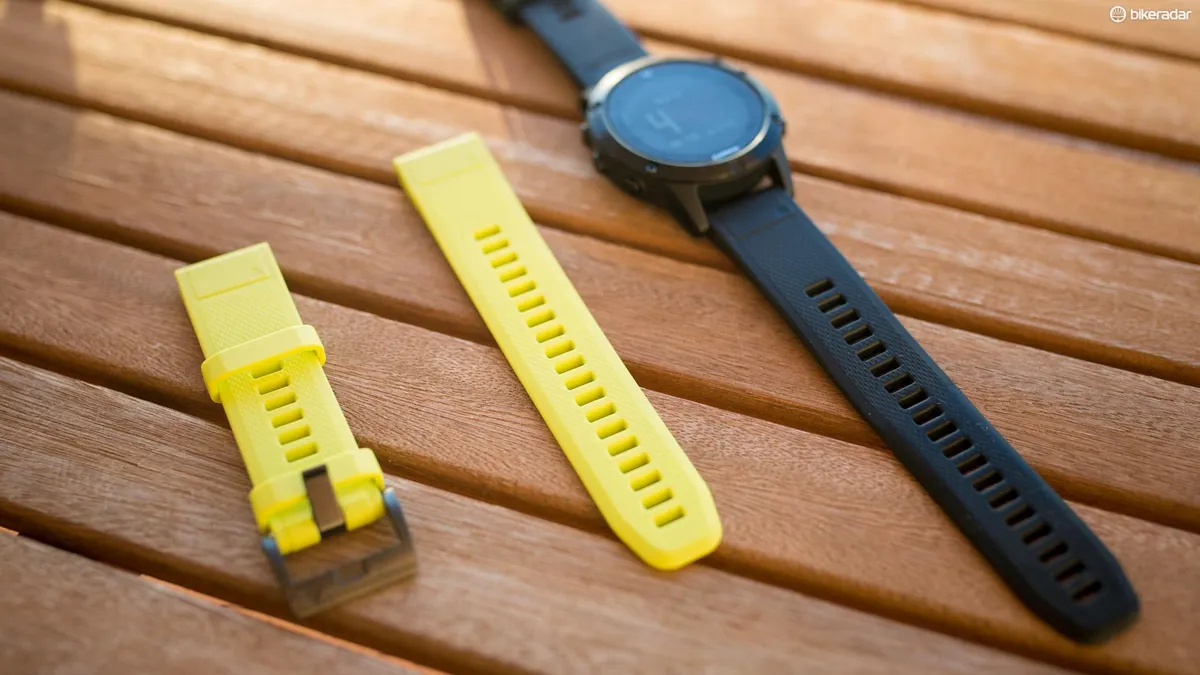Garmin’s fenix 5 is the follow-up to the brand's veritable fenix 3 and fenix 3 HR — we’re not sure what happened to the fenix 4.
- Garmin fenix 3 review
- Apple Watch 2 review
- Best GPS watches for cycling: how to choose the right one for you
I am a big fan of these watches, not only for their functionality and versatility, but also their durability. They are powerful enough to all but replace your dedicated head unit, but can also accompany you on any adventure. In fact, I liked the fenix 3 so much that after I finished my review I bought it!
One of the few niggles I had with the fenix 3 was its lack of Elevate HR sensor, although the sensor was added to the fenix 3 HR when Garmin updated the watch. However, I had mixed results when I tested the fenix 3 HR's optical sensor.
The fenix 5, as you’d expect, not only gets the Elevate HR sensor, but is also available in three versions: the fenix 5S, fenix 5 and fenix 5X
The biggest difference between the three watches is the size of their faces, — 5S - 42mm, 5 - 47mm, and 5X - 51mm — and the 5X has mapping capabilities included topographical maps, street maps and turn by turn directions, and can find points of interest — more on this later. The 5 and 5S see the same feature set and are also available with mineral glass and sapphire screens, the 5X is only available with a Saphire screen. All the Saphire models also get WiFi connectivity.
We’ve had the Fenix 5 (not S or X) for the past few months to find if it can fill the big shoes of the Fenix 3.
New charging, features, screen and more!
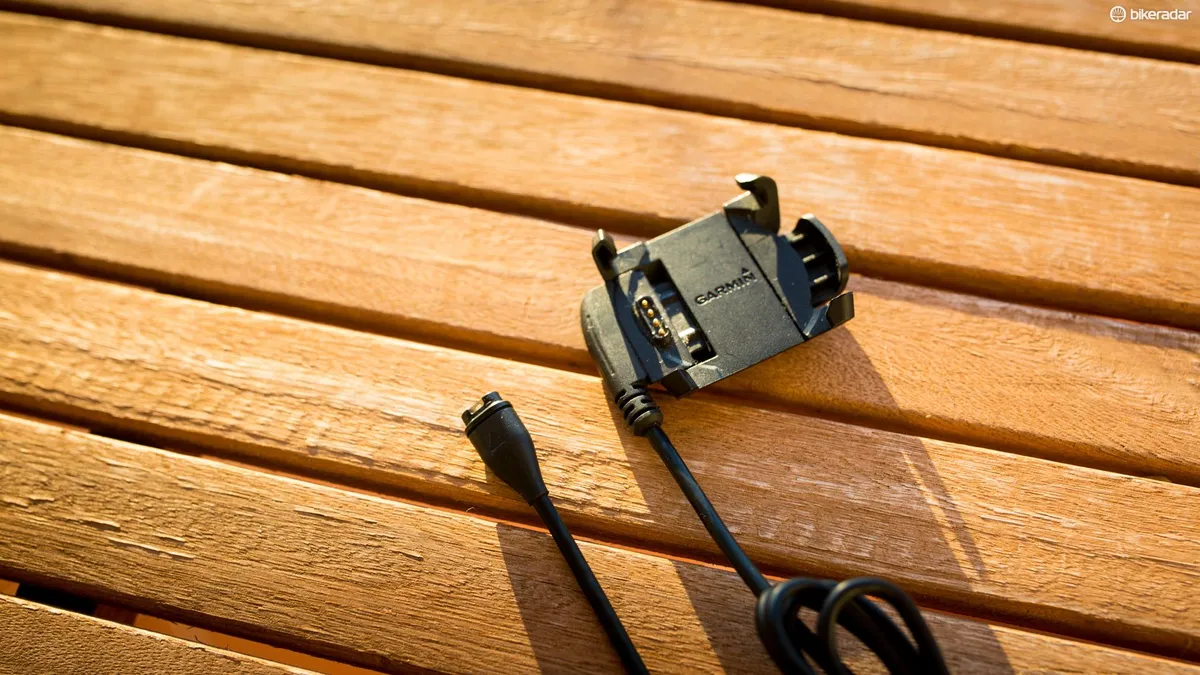
The first thing you notice out of the box is the size of the watch.
The fenix 5 is noticeably smaller and thinner, but is actually a few grams heavier than its predecessor weighing 88g compared to the 84g of the fenix 3.
The new watch also gets Garmin’s QuickFit bands, which allow for tool free swaps with the push of a small lever on the inside of the band. Garmin fenix 3 owners can also take advantage of these bands.
The band itself is made from softer rubber than the fenix 3’s, but I did notice a small split developing in my preferred notch. Garmin has also decided to bring back the clasp with squared off edges from the fenix 2, which can eat into your wrist over time though, especially on MTB rides where you are getting jostled around.
The fenix 5 also get a new charging cord, which has been updated from ‘The Claw’ to a more traditional plug. The advantage to this updated plug is it’s much more compact, but unfortunately the most efficient charging position for the watch is screen down, so I had fears of scratching the screen.

The new watch also gets a 64 colour, slightly higher resolution screen that's been upped from 218 x 218px to 240 x 240px. Claimed battery life has also increased — 24 hours in GPS/HR mode, 60 hours in UltraTrac mode without HR, and two weeks in watch mode. I found these to be pretty close to true, although it’s tough to completely test the accuracy of the UltraTrac mode as I’m not out riding for 60 hours at a time.
Garmin has also changed the menu hierarchy on the fenix 5. Everything is pretty intuitive, and I’m not sure if one is better than the other, but it is noticeably different.
Connectivity
Given that Garmin owns the ANT+ protocol it's not surprising that the fenix 5 supports just about every ANT+ sensor under the sun, including powermeters and even some more obscure ones such as Muscle Oxygenation sensors. It can also connect to Di2, eTap and EPS drivetrains for ANT+ shifting support.
The biggest news is that Garmin has stopped dragging its feet on Bluetooth sensor support and the new watch will play nice with HR, Power, Speed and Cadence, as well as running foot pods — which are likely to be available in subsequent software updates.
I was able to get the watch to connect to a range of sensors with no trouble on both Bluetooth and ANT+, with the watch recognising the external units almost instantly.
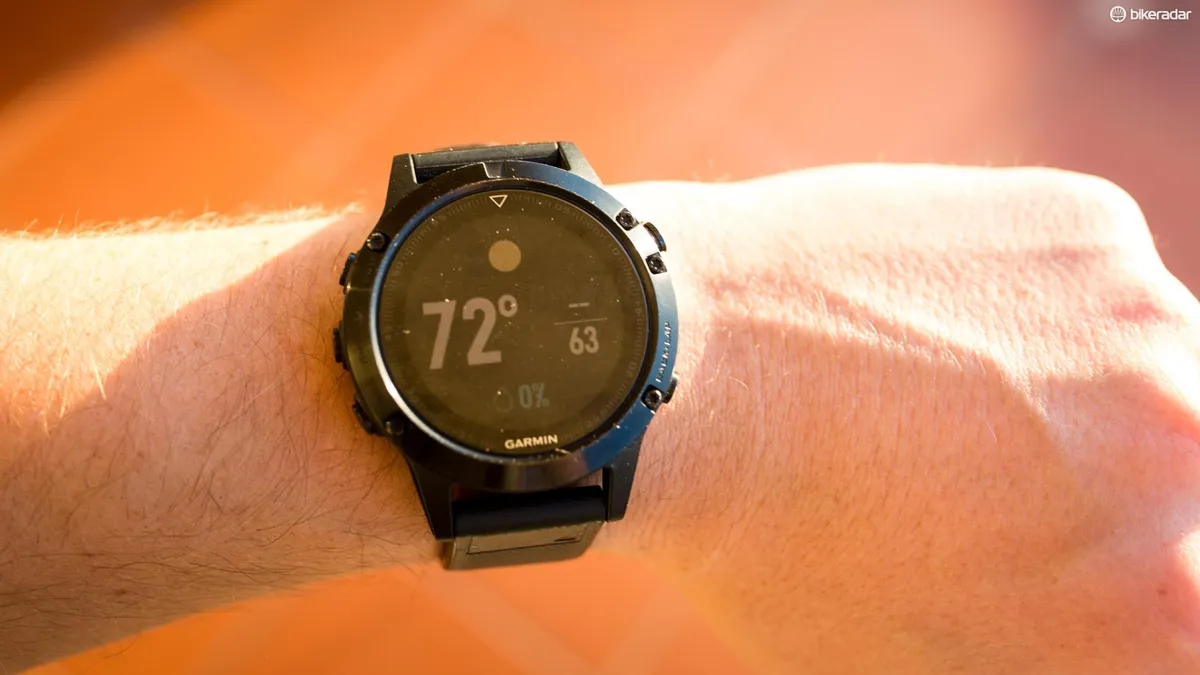
With the Fenix 5’s rugged exterior it also does a pretty good impression of a smartwatch, with the Bluetooth connection also allowing for onscreen notifications from your phone — it will even display emojis. It also tracks steps and sleep patterns too.
I immediately turned the notifications off though, as there are few things that grind my gears more than my watch and phone buzzing at the same time.
With the connection to your phone, the watch also connects to the Garmin Connect app. Here it will not only sync activities to Garmin Connect — and automatically push them to Strava, Training Peaks, or wherever else you’d like them to go — but also facilitate over the air software updates and access to the Connect IQ store for watch faces, widgets, data fields and more.
My test watch was a Sapphire version meaning it also had WiFi connectivity — the standard version doesn't have a WiFi chip. So at home the watch will automatically connect to your home network and upload your ride as well as download updates. This method is supposedly faster than Bluetooth, but in reality the difference is minimal.
Last but not least, and as you’d expect from a high-end Garmin unit, the fenix 5 has both GPS and the Russian GLONASS networks for ultimate accuracy.
On the bike
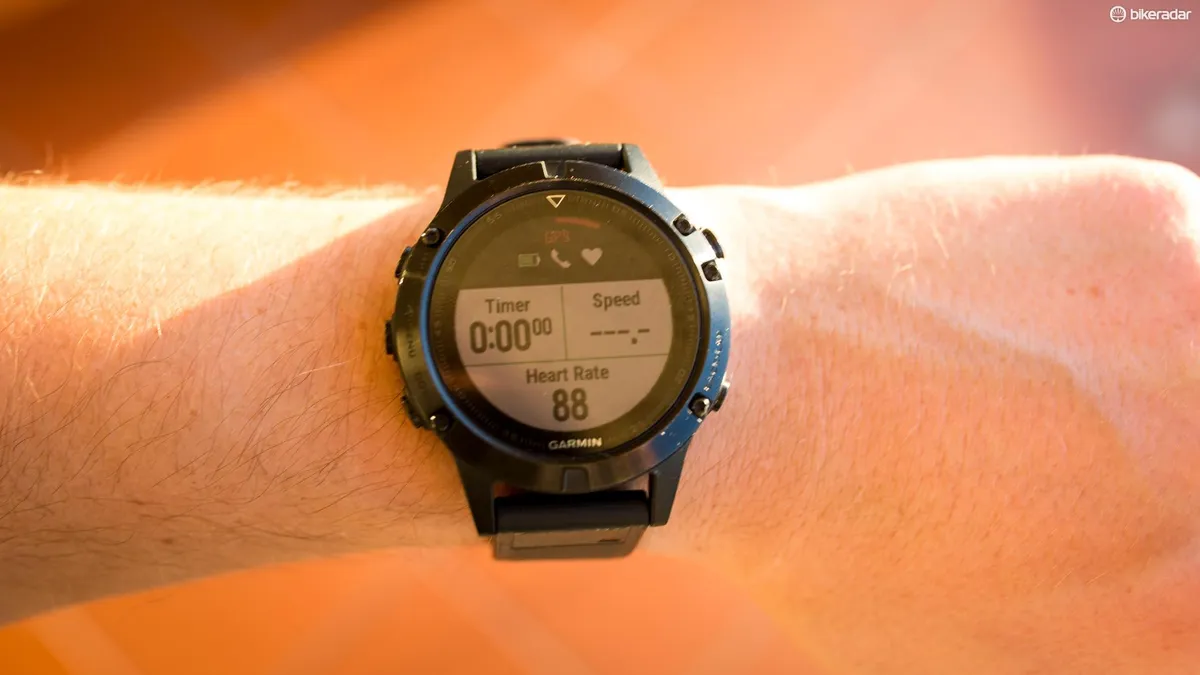
Since I’ve had the fenix 5 I’ve been testing it against my Wahoo ELMNT Bolt as a benchmark, and it hasn’t missed a beat, matching the Bolt when it came to speed and distance throughout rides.
As you can imagine, running GPS and GLONASS together takes its toll on the battery with each activity eating into the battery, although usage still came pretty darn close in line with the claimed battery life.
I am a big fan of Garmin’s UltraTrac mode, which has also been updated for the fenix 5. In this mode the watch perpetually turns off the GPS to save battery, supplementing the data from the satellite with readings from the built-in gyroscope, instead of an accelerometer on the Fenix 3, to calculate speed and distance, while also gathering data from any ANT+ of Bluetooth sensors.
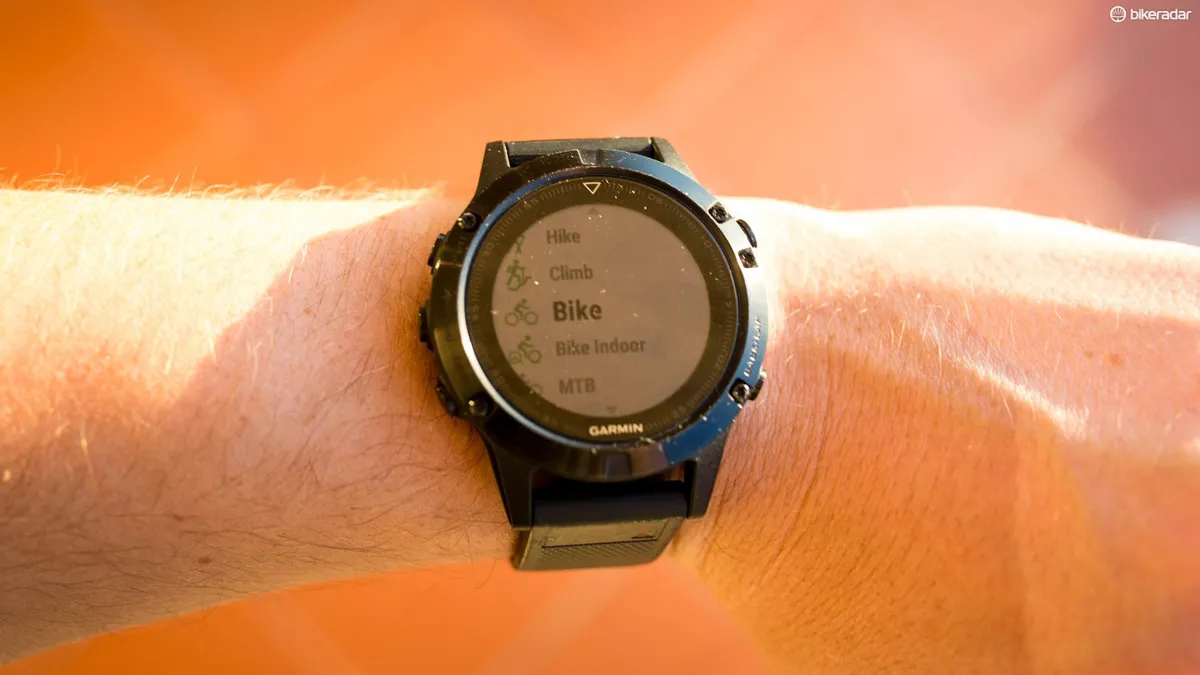
Garmin claims that using a gyroscope instead of an accelerometer provides a more accurate reading while also improving battery life. With the fenix 3, I had one anomalywhere according to Strava I was doing 70mph/112.7kph down a particularly rough MTB descent. I believe the shaking of my watch (and the rest of my body for that matter) tricked the sensor into reading that I was travelling much faster than I was — this only happened once it in two years.
However, since I’ve had the fenix 5, I haven’t experienced any weird readings such as this, so it’s an improvement yes, but only a minor one.
There are three cycling profiles preloaded into the watch: Bike, Indoor Biking and MTB. The advantage here is if you have a powermeter on your road bike, but not on your MTB, the watch won’t waste battery looking for the sensor. Same goes for Indoor Biking, it won’t spend valuable juice searching for a GPS signal when you’re in your basement.
With up to 19 pages of four data fields on offer, there are is more information about your ride available than most of us have any idea what to do with. Additional data fields can be downloaded from the Connect IQ store should you not be able to find what you’re looking for.
The fenix 5 also allows for access to Strava Live segments and can control the Garmin Varia lights too.
Like the fenix 3, the fenix 5 offers a breadcrumb style map, and will buzz when a turn is coming up, from a predetermined course, whether it be from a previous activity or a route loaded from Garmin Connect.
The watch can also operate ‘Track Back’, which essentially retraces your steps back to your starting point. Like all breadcrumb follow-the-line-style navigation, it works, but you do need to pay close attention, which is difficult given the watch is on your wrist. This is where the 5 differs from the 5X, which has pre-loaded street and topographical maps.
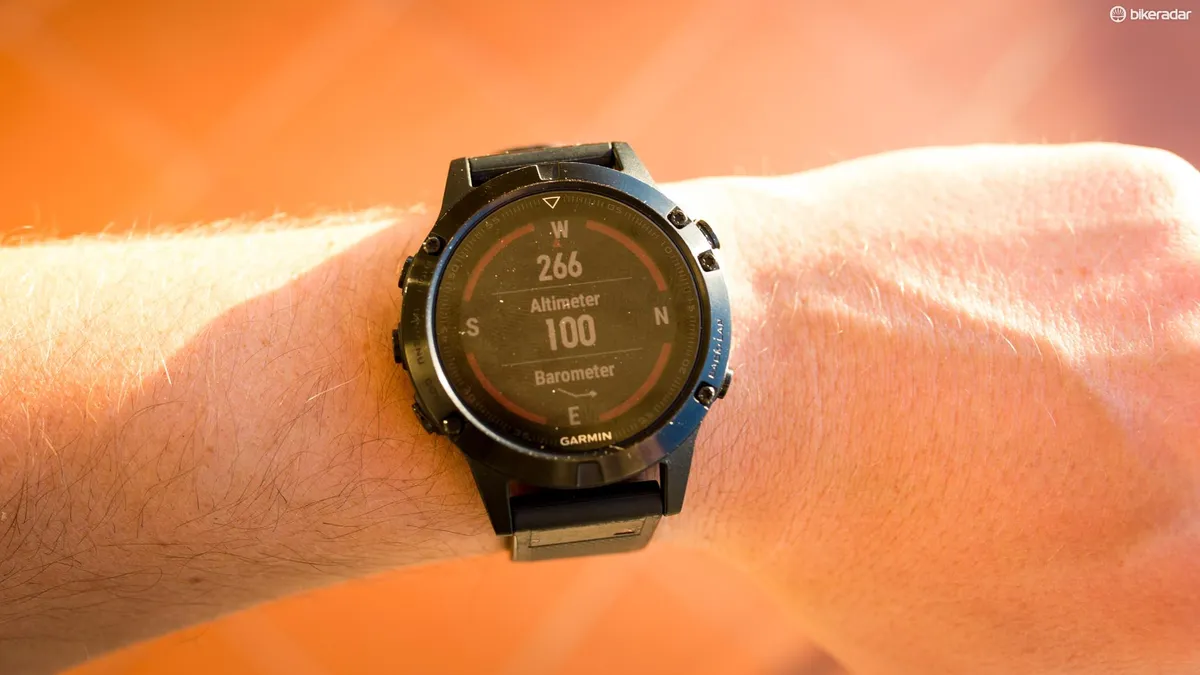
The fenix 5 also gets a barometric altimeter for accurate elevation readings, as well as an electronic compass, accelerometer, gyroscope and thermometer.
If your hobbies aren’t as singularly focused on things with pedals and two wheels, the fenix 5 also has activity modes and metrics available for everything from golf to skiing and surfing, and metrics to go accompany them. If you still can’t find what you’re looking for, you can also create your own custom workout modes on the watch.
Optical heart rate accuracy
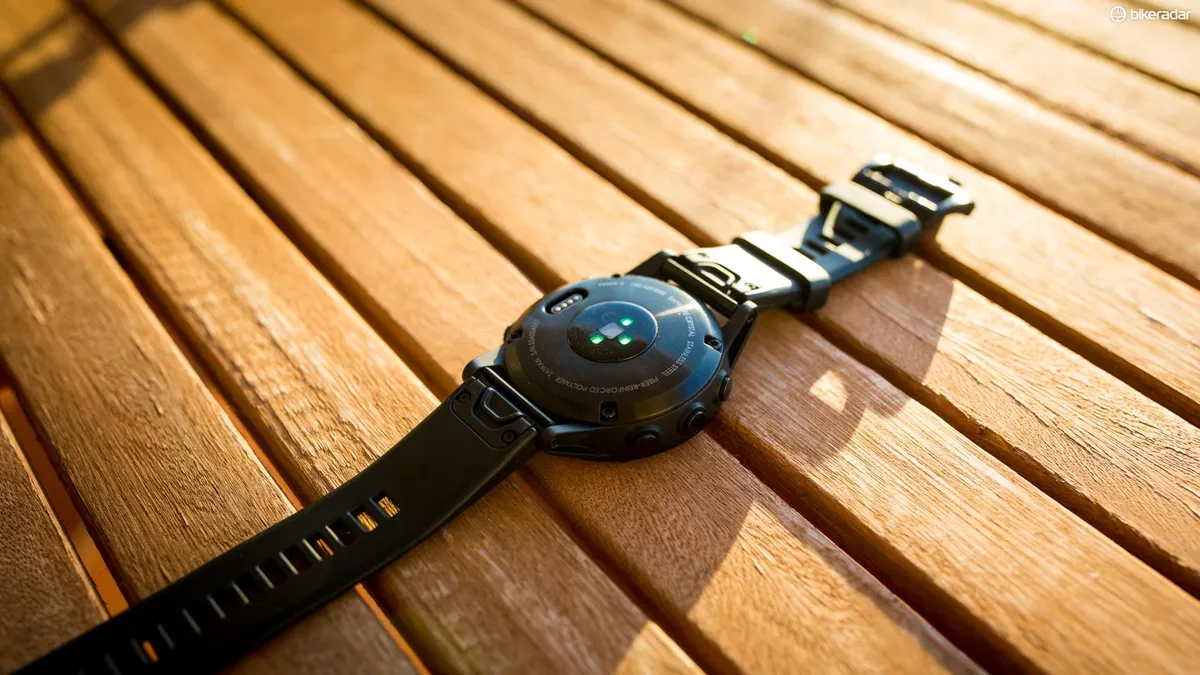
Up to this point when it has come to optical heart rate, every device I’ve used hasn't quite stacked up when compared to a traditional chest strap. Unfortunately, it seems the fenix 5 falls in with the pack when it comes to real world applications such as riding.
The biggest problem with these sensors is they depend heavily on your skin colour, how hairy your arms are, where they are worn on your wrist and how snug the strap has been tightened. Throughout testing I made sure to wear the watch snug and above the bony part of my wrist as per the user manual.
As with previous devices, the fenix 5 performed admirably on the road and mountain biking, tracking similarly to the chest strap that was paired with my Wahoo.
As you can see however, there are definitely times, especially on the MTB graph, where the watch really struggled to maintain a lock on my heart rate and the point to point accuracy is dismal at best.
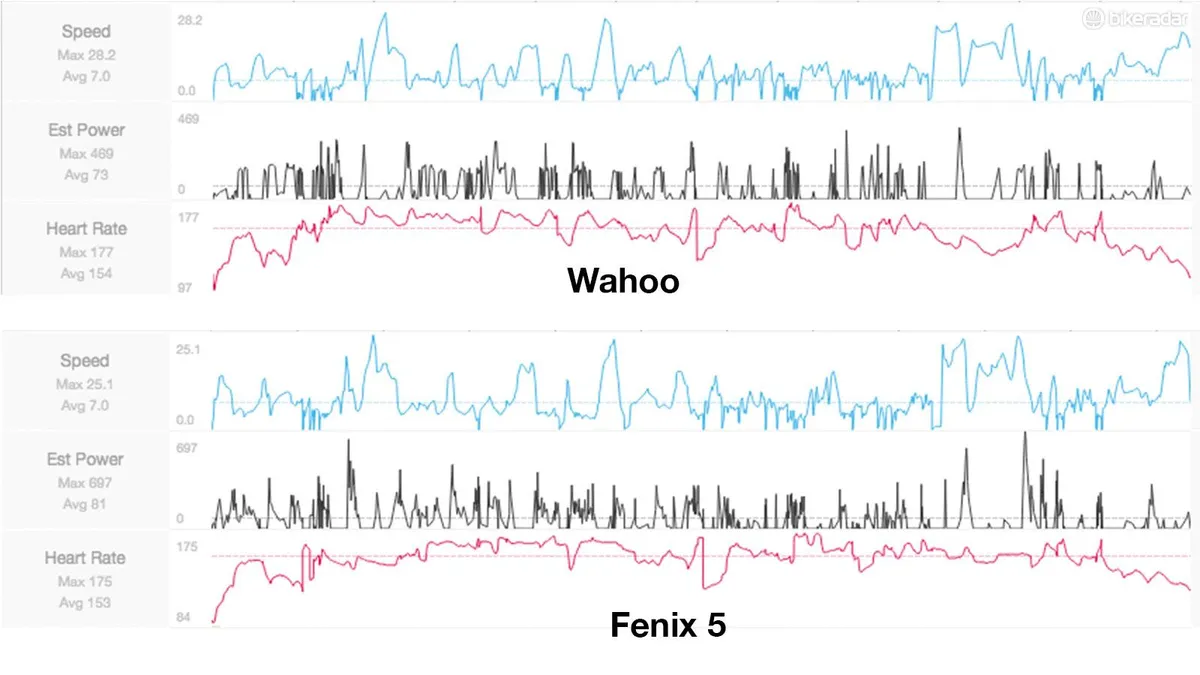
If you focus in on the graphs there are areas where the line goes quite flat or drops vertically, and there is one anomaly in particular on the road ride where the reading goes the opposite way. This is likely due to the sensor not being able to maintain optimal contact with my wrist because of bumps on the road or trail.
However, even though the point to point accuracy isn’t great, the fenix still manages to come within a few BPM based on average and max heart rates, which is impressive.
That said, Garmin has greatly improved the accuracy of its 24/7 HR measurement, with the sensor now taking a reading every 1–2 seconds, whereas the fenix 3 HR was quite random. This is ideal for working out your resting heart rate, which is extremely important for working out your level of fatigue.
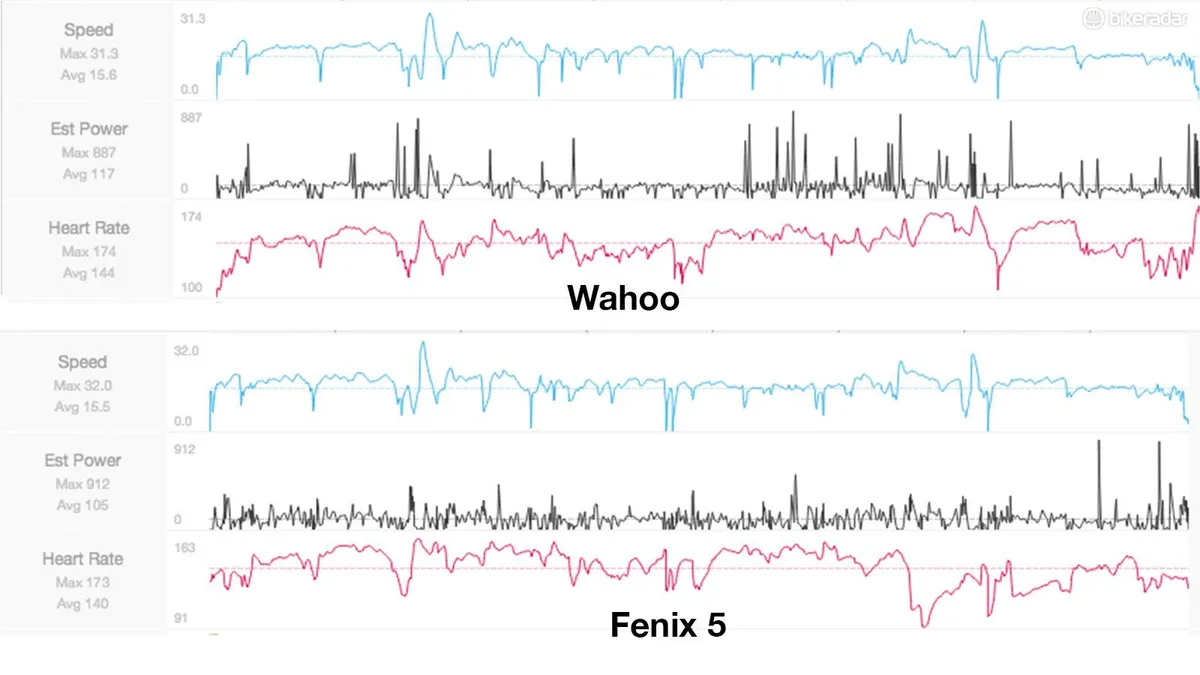
Training load/stress
The fenix 5 also gets Firstbeat training load integration, which is designed to serve as an automated coach of sorts. Basically, it tells you where you’re at in your training based on historical loads, how productive your last activity was, its training effect and how long it will take you to recover.
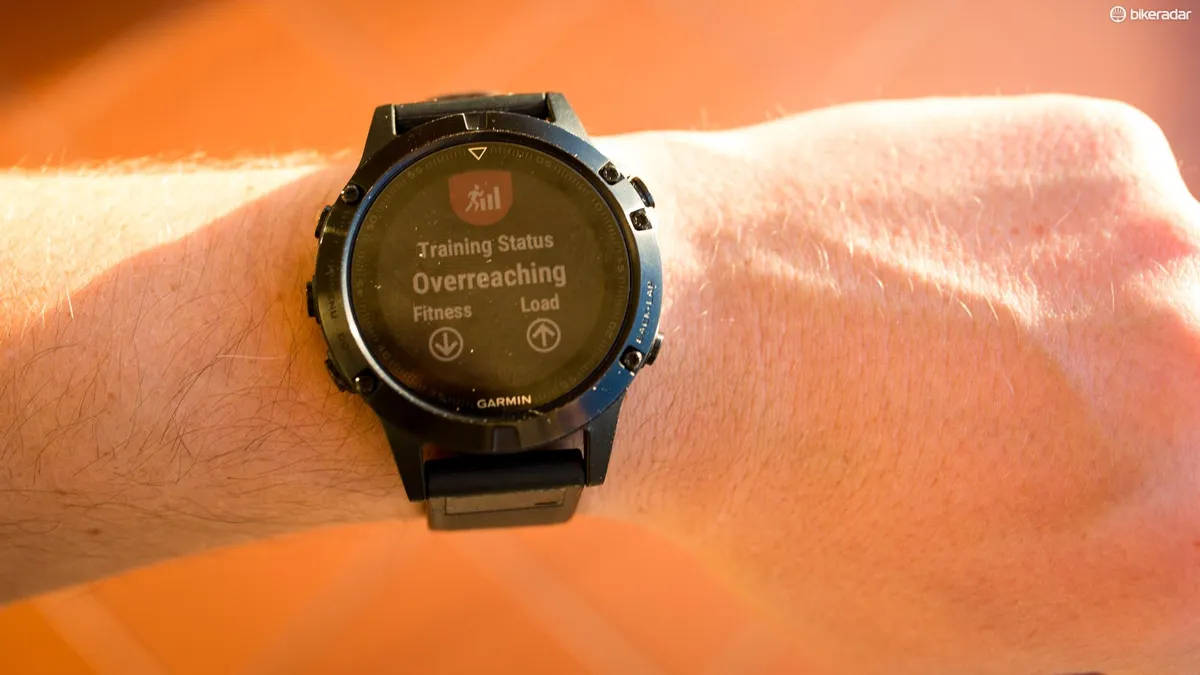
It takes a few activities for the device to get to know you and a few weeks for any of the data to be moderately reliable. These are novel features, but they are educated guesstimates, so take them with a grain of salt.
Fenix 5 overall impression
Garmin's fenix 5 is a fantastic watch for the outdoorsy person. It’s data heavy and offers arguably the widest range of data fields on the market.
It’s accurate, it’s tough and it looks great! I am partial to the look of a big watch, but the majority of people aren’t, so the fenix 5's smaller size is likely to please. The screen is sharp in all light conditions and the range of built in sensors is fantastic
In line with what I’ve found elsewhere, the optical HR sensor wasn’t as accurate as a chest strap, but it’s good enough to recognise trends. I do however wish Garmin would go back to the rounded clasp because it’s considerably more comfortable.
For those who prefer a watch over a headunit for cycling, the multi-sport athlete, and the outdoor adventurer, the fenix 5 ticks all the boxes in my poinion — that is if you can afford the £589.99 / $699.99 / AU$949.00 price tag.
